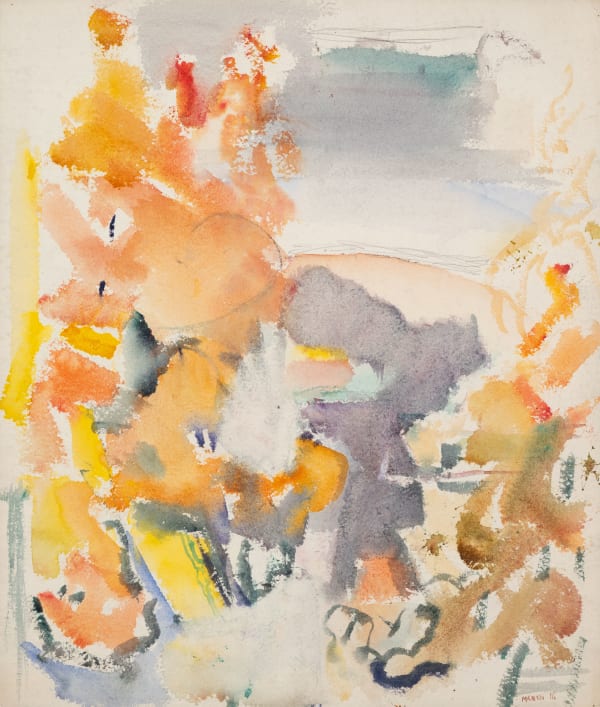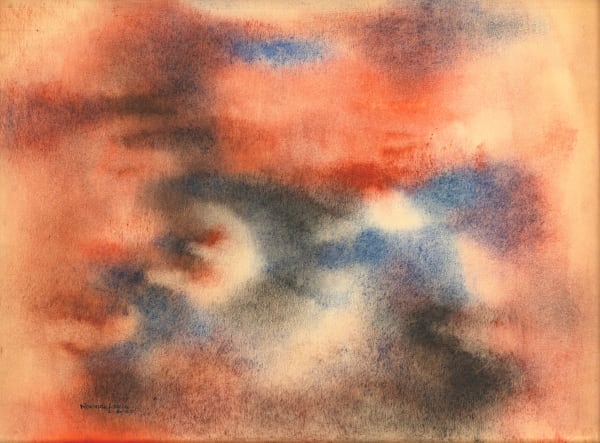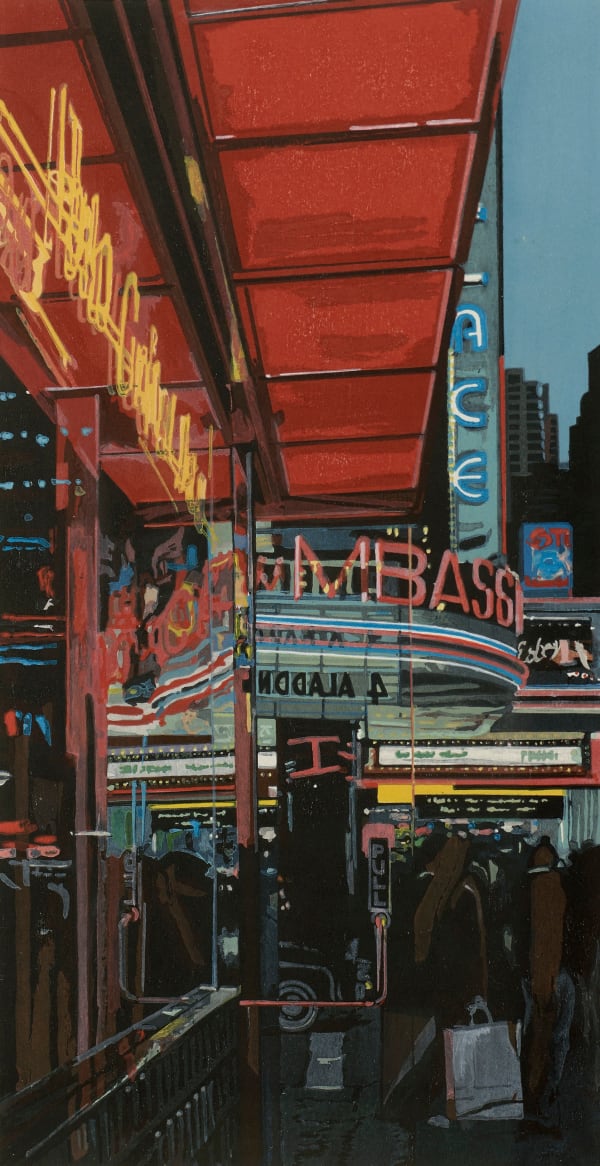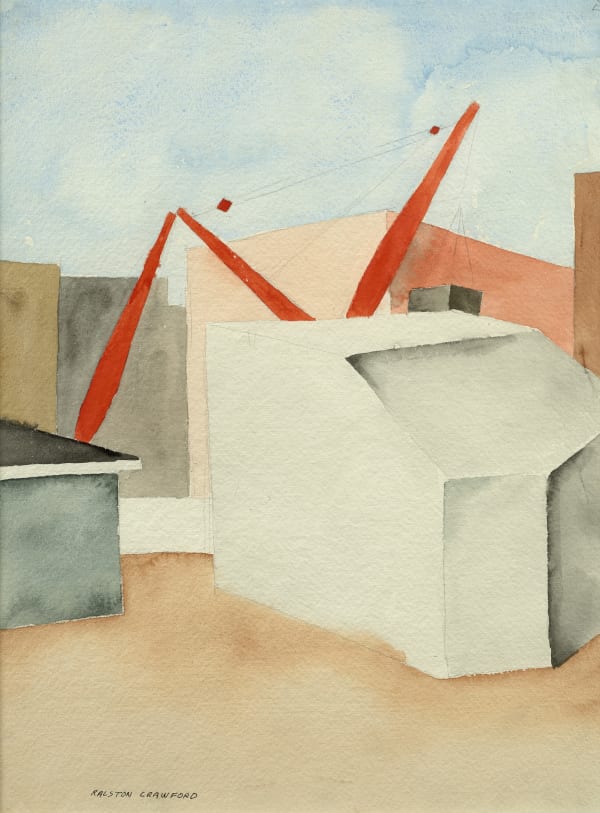-
“John Marin was possibly the first American artist to make abstract paintings. There are other candidates —among them Marsden Hartley and Georgia O’Keeffe —but it is thought that Marin got there first.”
—Roberta Smith, The New York Times, 2011
-

-

Maurice Prendergast
Revere Beach, 1913Watercolor, pastel and pencil on paper
11 x 15⅜ inches
27.9 x 39.1 cm -
-

Morris Graves
Mandala, 1970Mandala provides a quintessential example of the Eastern philosophical influences at the root of Morris Graves’ artistic practice. Mandala, the Sanskrit word for circle, is loosely defined as a geometric symbol or figure traditionally used in Eastern religions, including Hinduism and Buddhism, as a tool to aid meditation and spiritual practices. Mandalas can be figurative or abstracted, elaborate, or simple, and they often represent the universe, or a sacred space through which one conducts a spiritual journey. The mandala serves as a map for these spiritual rituals to be followed from the outer edges of the design continuing through the visual layers to its core. -

Richard Estes
EAT, 2022EAT by Richard Estes is an ambitious 35-color lithograph. Richard Estes continues his long commitment to printmaking with EAT while exploring a new technique via color lithography, a medium that lends itself to the painter’s carefully balanced, symmetrical composition. In keeping with Estes’ celebrated paintings of New York City, the recognizable Madison Avenue storefront of Eli Zabar’s E.A.T. is the subject of the work, synthesizing two important recurring motifs in the artist’s visual lexicon — food and reflections.
-

-
If you would enjoy learning more about the available works, please contact Alana Ricca at (212) 879-8815, or alana@schoelkopfgallery.com. We look forward to being in touch.
July 15 - September 15, 2023





















